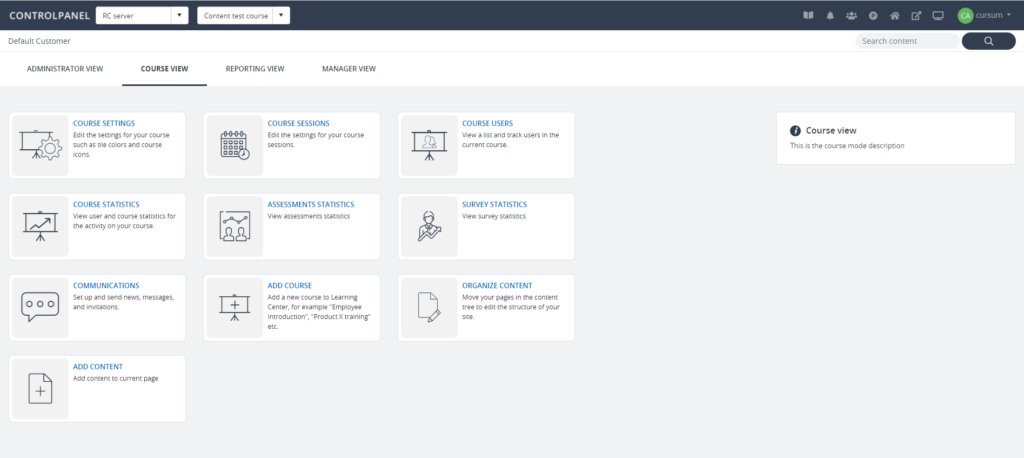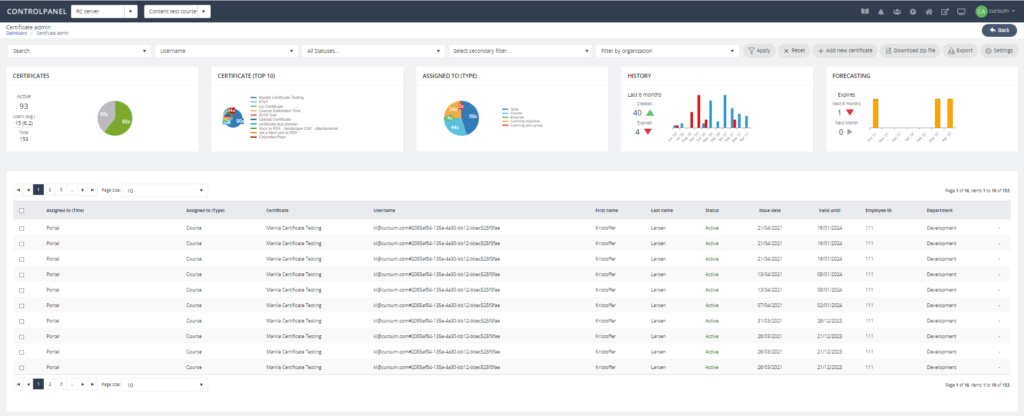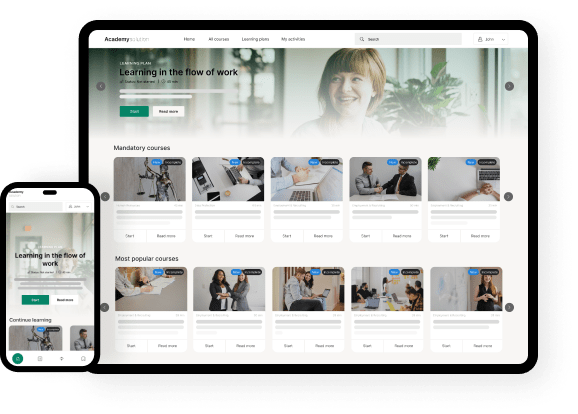While LMS solutions are abundant in the market, they’re not all cut from the same cloth. Learning Management Systems all have unique and varying features and functionalities. Nonetheless, if you’re buying an LMS for the first time, the most important thing is to figure out how it will fit your e-learning program. And part of this process requires understanding the “standards” in today’s e-learning industry. To guide you, here are seven must-have LMS features to help you boost your e-learning program.
Course management tools
The primary purpose of an LMS is to help you create simple and straightforward e-learning courses. Therefore, a Learning Management System should not make things more complicated for course managers or users. A standard LMS should have course management features that enable e-learning administrators to create, assign, and modify courses without much hassle.

For example, Cursum’s e-learning platform possesses functionalities that will allow you to use pre-designed course templates, enroll users in bulk, configure advanced course settings, and add media in various formats.
Want to know more about our LMS? Click here.
SCORM and xAPI compliance
If you don’t know much about Learning Management Systems, terms like SCORM and xAPI compliance can make you scratch your head in confusion. But an LMS that is SCORM and xAPI compliant is pretty much a de facto standard in e-learning.
In simple terms, SCORM or Shareable Content Object Reference Model is a set of technical specifications or standards for LMS products. When your LMS is SCORM compliant, it signals programmers how to write their code so that their LMS can jibe well with other conformant e-learning software.
Experience API or xAPI (formerly Tin Can API) is a data standard for e-learning technology. xAPI establishes a common technical framework for how different software systems can report learning actions. It makes it possible to collect data about a person’s online and offline experiences.
Some LMSs have different applications that use xAPI to record learning events, including instructor certification, reading an e-book, interacting with web videos, assessments, and meetings. The question now is, why choose a SCORM and xAPI compliant LMS?
Remember, e-learning is all about interoperability, compatibility, and consistency. Choosing a SCORM and xAPI compliant LMS will let you achieve these qualities in one integrated unit. There’s a massive ecosystem of e-learning products that work together because of SCORM and xAPI. To be part of this ecosystem can make a significant difference in your e-learning campaign.
Gamification and kudos system
We mentioned in our previous blog how essential engagement is as far as employee retention is concerned. And when you talk about increasing learning engagement, gamification in LMS is becoming an industry standard.
Accept it or not, attention can be a limited resource in digital learning. That’s why having an LMS with a feature to sustain your learners’ interest can have a ton of difference. Think of gamification as an act of making e-learning more immersive or challenging, something that doesn’t necessarily ask students to compete but gets them extra motivated.

Source: FinancesOnline
Motivation, though, is influenced by several factors. In most cases, it can be external, like rewards. In an LMS, gamification is often paired with a reward or kudos system. Some call these rewards badges, points, levels, and leaderboards. But whatever you call it, having these in your LMS will boost learner engagement and cause a positive learning experience.
Intuitive user interface
The word “intuitive” is a catchword in the digital platform industry. When somebody says your LMS has an intuitive user interface, this often connotes that things will work according to what users expect. In simple terms, your LMS is intuitive when your users don’t have to think much about how it will function. Navigating through your LMS should not require much mental effort.
An intuitive interface is valuable in achieving quality interaction between the user and your LMS. Your LMS should be reliable every time users need to log in. It means that user experience must be the same no matter where, when, or how end-users access your platform.
Multiplatform accessibility for mobile learning
With remote learning becoming a trend, especially during this health crisis, an effective LMS should be multiplatform-friendly. It must be responsive on any device and should be accessible for users’ convenience. And if your LMS is accessible using various platforms, it also follows that it has advanced mobile capabilities.
The reason behind the demand for such capabilities is the people’s growing mobile engagement. There’s no denying that we’re already living in a mobile world. It’s almost like there’s no moment in our daily lives where we don’t need to use smartphones or tablets. It only tells us that mobile learning will remain a household name in the learning and development industry.
Learning and certification management
Setting up and offering a certification program for an e-learning program has its complexities. That’s why learning and certification management is one of the essential features of an LMS. Tracking learning goals through a certification system gives your company the power to report employee progress with ease. Not only that, but it also provides immediate feedback on learners’ training efforts.
Certificates serve as a tangible reward that you can use to encourage your employees to accomplish a course. What’s good about an LMS with certification management is that it simplifies certificate customization and distribution.

For example, Cursum’s LMS allows you to create certificate templates. These certificates can be automatically issued to course participants upon finishing an assessment, learning objective, or course.
Virtual rooms for team collaboration
Even though e-learning somehow creates distance between learners and instructors, it doesn’t limit collaboration. With the use of virtual rooms, collaboration is possible even in an online setting.
Virtual rooms are digital spaces that may have the same features as a brick-and-mortar classroom. An online room can have:
- Digital whiteboards where instructors can post their announcements and updates
- Instant messaging
- Video conferencing
- An image gallery to share and upload photos
- A virtual calendar to keep track of important schedules such as meetings and deadlines
Some of the benefits of having an LMS with a virtual room include:
- Increased collaboration and interactivity
- Personalized learning experience (students can learn at their own time and phase)
- Simple community and relationship building
- Smooth scheduling and easy task designation
Seeing how the traditional face-to-face classroom setup instantly vanished during the pandemic, online training through digital classrooms may now have found its permanent place within learning academies.
Create the best e-learning program with our LMS
According to Donna J. Abernathy, author and e-learning researcher, e-learning is vital for development. As she says:
Online learning is not the next big thing; it is the now big thing.
Donna J. Abernathy
As digital transformation increasingly becomes a reality, your strategy should follow the latest trends. However, with all the intricacies of using technology, getting the recommended LMS features to boost your e-learning program may not be easy. Good thing, we’re here to guide you from start to finish.
Cursum offers an all-in-one e-learning solution that possesses the necessary elements of a top-performing LMS. We can help you build a smart e-learning platform that can cater to your company’s training needs. Hit this link to start learning more about our services.


